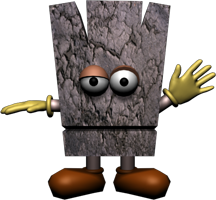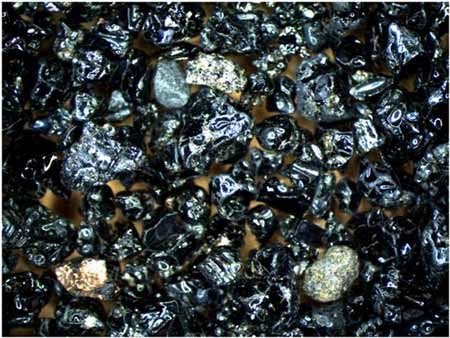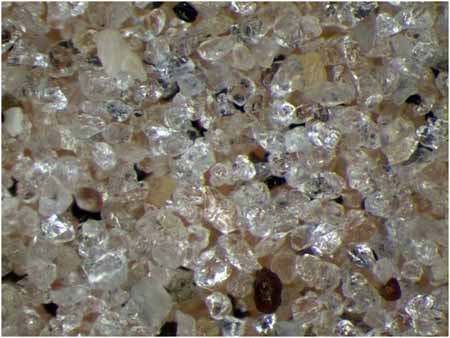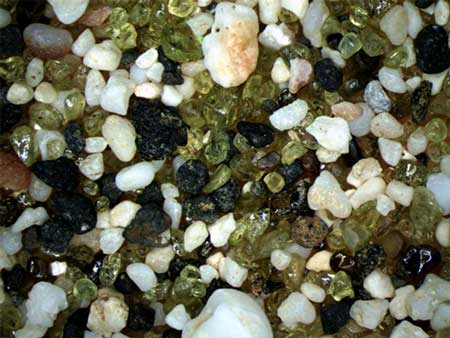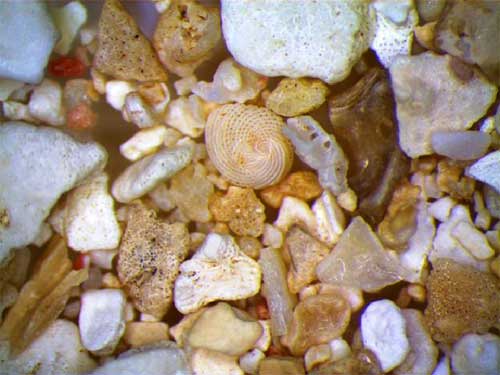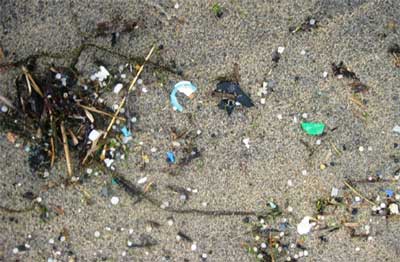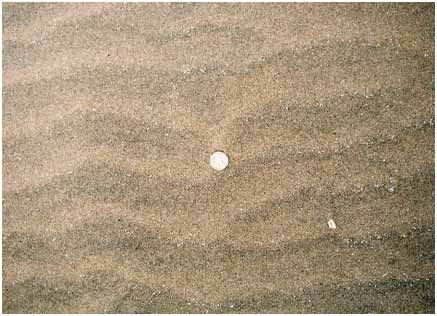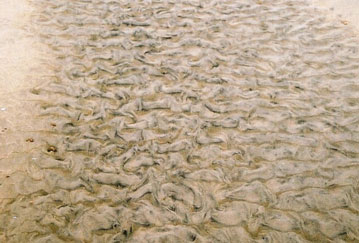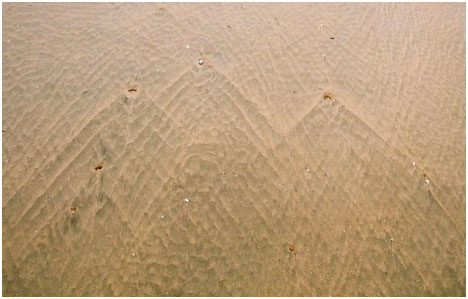Beaches
A beach forms when waves deposit sand and gravel along the shoreline.
Some beaches are made of rocks  and pebbles. Over time they are worn smooth from being rolled around by waves. The rocks usually reflect the local geology.
and pebbles. Over time they are worn smooth from being rolled around by waves. The rocks usually reflect the local geology.
Other beaches are made of sand. The colour of the sand depends on the minerals in each grain. Volcanic  sand looks black and quartz sand looks white.
sand looks black and quartz sand looks white.
What other kinds of things do you find on beaches?
If you look closely at a handful of beach gravel or sand you might find some pieces of shells. Other beaches are mostly made up of shells and broken bits of coral with very few rock fragments. These kinds of beaches are often found where the water  is warm.
is warm.
Waves and tides make beautiful patterns on beaches
Ripples form underwater and are exposed when the tide goes out. Waves produce rows and rows of ripples with long and curvy crests.
Pebbles and sticks can obstruct and deflect the water as it flows up and down the beach. Ripples form overlapping V's extending outward from each pebble.
What patterns can you find when the tide goes out?
Dark coloured minerals are usually heavier than light coloured minerals. Water rushing up and down the beach face concentrate the heavy minerals between ripple crests.
« Back 




